Azokh Cave
Location
Azokh Cave is located in the southeastern part of the Artsakh Republic, near Azokh village in Hadrut region. It is located above the river valley, about 200 m above the namesake village. Azokh Cave is geographically located in a natural corridor through which ancient people and animals migrated from Africa to Europe and Asia.
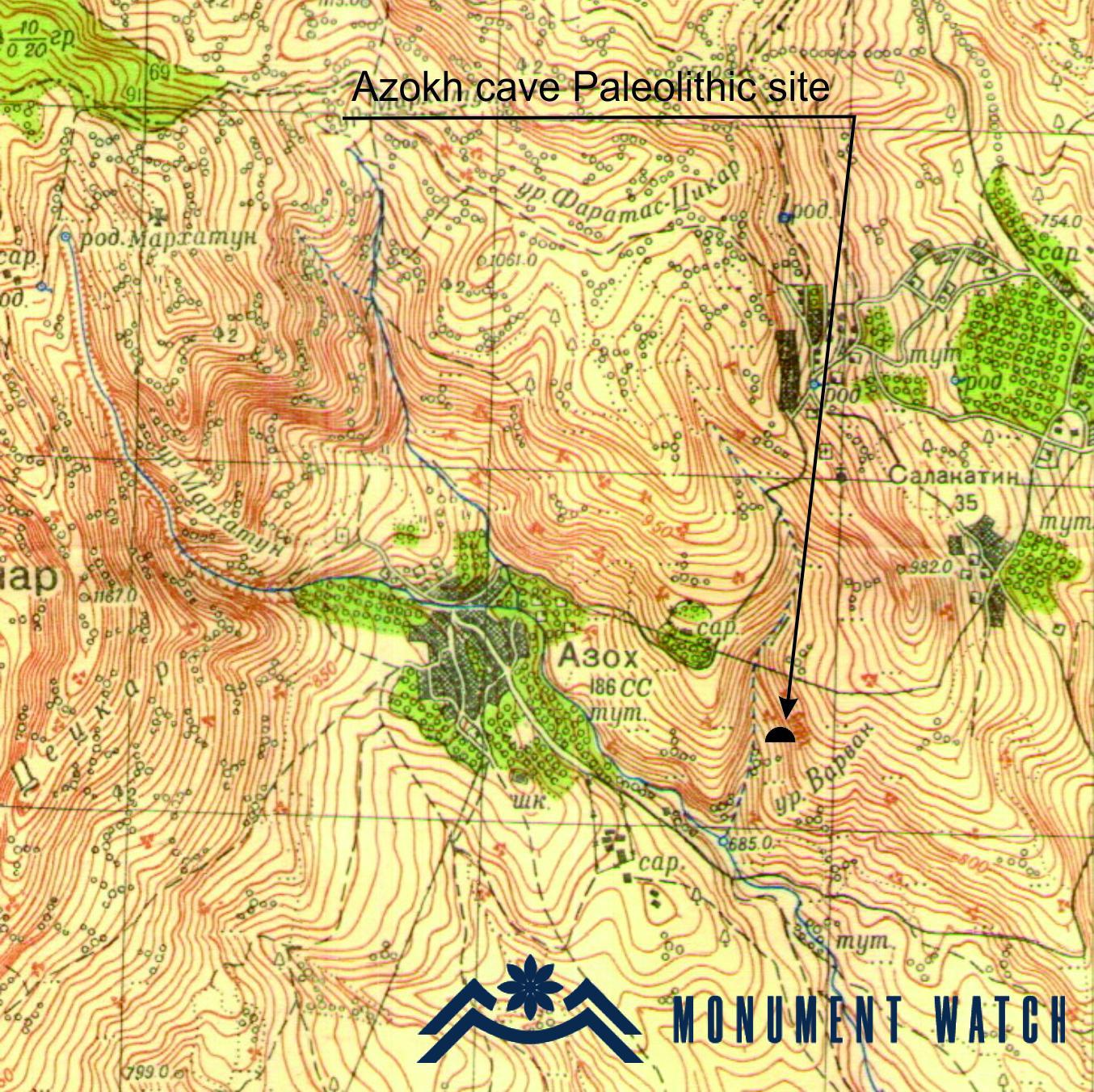
Historical overview
According to the legend, the treasures of Amaras monastery were kept in this cave (Mkrtchyan, 1985, 109). And Bishop Makar Barkhutaryants, who mentions the cave in the late 19th century, notes that here he saw a statue of a woman carved out of stone (Barkhutaryants, 1895, 88).
The first stage of archaeological research
Azokh Cave is one of the most important archaeological monuments of early human settlement. It is a spacious natural cave, consisting of several halls, which are connected by narrow corridors and entrances (Fig. 1).
The excavations of the main and largest entrance was launched in 1960 by the Azerbaijani archaeologist M. Huseynov, who led the excavations of the site until 1980 (Гусейнов, 1971, 477). In the first stage of the excavations, a part of the lower jaw of an ancient man was unearthed from the archaeological site. It corresponds to the transition period between the straight-walking man and the Neanderthal man, which is now considered the era of the Heidelberg man (Fernandez-Jalvo, King, Yepiskoposyan, Andrews, 2016, 12).
Quite a lot of information was lost at this stage of the excavations, as the latter were not of systematized and interdisciplinary character.
The cave was also damaged by the method and tools chosen by the expedition for the study. During the second stage of the excavations, it was stated by the specialists that explosions were previously carried out in some parts of the cave. This is evidenced not only by the information of eyewitnesses, but also by some cuts in the rock at the entrance to the cave. According to eyewitnesses, a vacuum rock drill was also sometimes used for excavations. This left an irreversible mark on the monument. It is not excluded that the use of such a tool also damaged the fragment of the lower jaw of a human unearthed here.
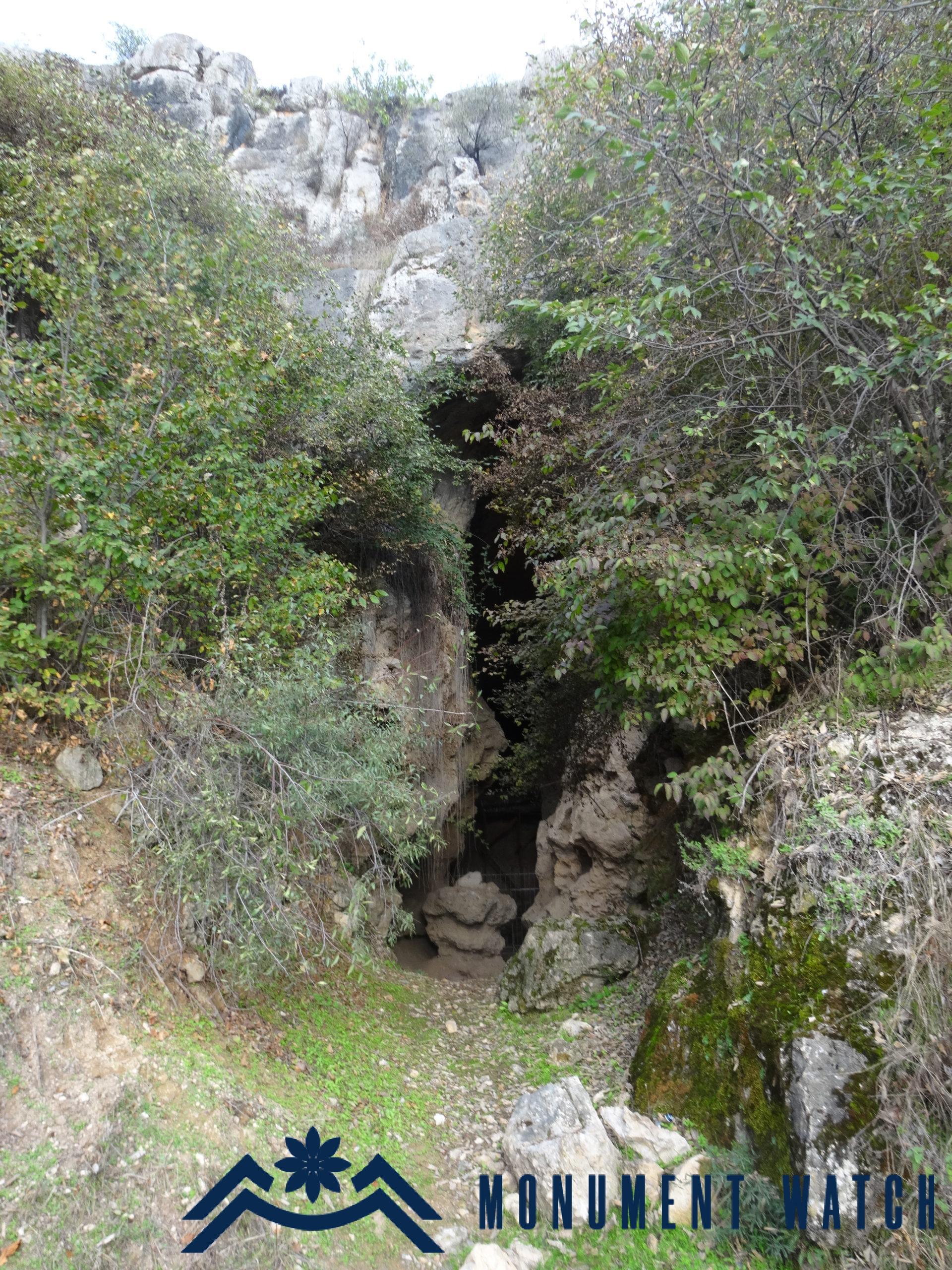
Fig. 1 The main entrance of Azokh Cave, 2017, photo by N․ Yeranyan․
The second stage of excavations
Since 2002, the Azokh International Expedition had been conducting research at the site on the initiative of the Ministry of Culture of the Artsakh Republic. In 2002-2009, 35 specialists from 8 countries participated in the research, including Armenia, Great Britain, Spain, Ireland, France, Germany, Australia and South Africa (Fig. 2-5).
Modern and systematized methods of excavations were applied in the activities of the expedition: three-dimensional recording of finds to provide information on their spatial and temporal distribution, examination of sediments to detect small mammals, detailed geological work to study cave stratigraphy, as well as radiometric dating of the sequence (Fernandez-Jalvo, King, Yepiskoposyan, Andrews 2016, 10-20).
The new phase of excavations revealed a long and almost continuous stratigraphic sequence of the period from the Pleistocene to the Holocene. In addition, there is evidence that three species of ancient humans inhabited the cave during these different periods: Homo heidelbergensis, Homo neanderthalesis, Homo sapiensis (King, Caceres, Cuelo de Oro, Murray, Andrews, Hixon Andrews, Dominguez Alonso, Asryan, Sanz Martin, Moloney, Yepiskoposyan 2015, 3-19).
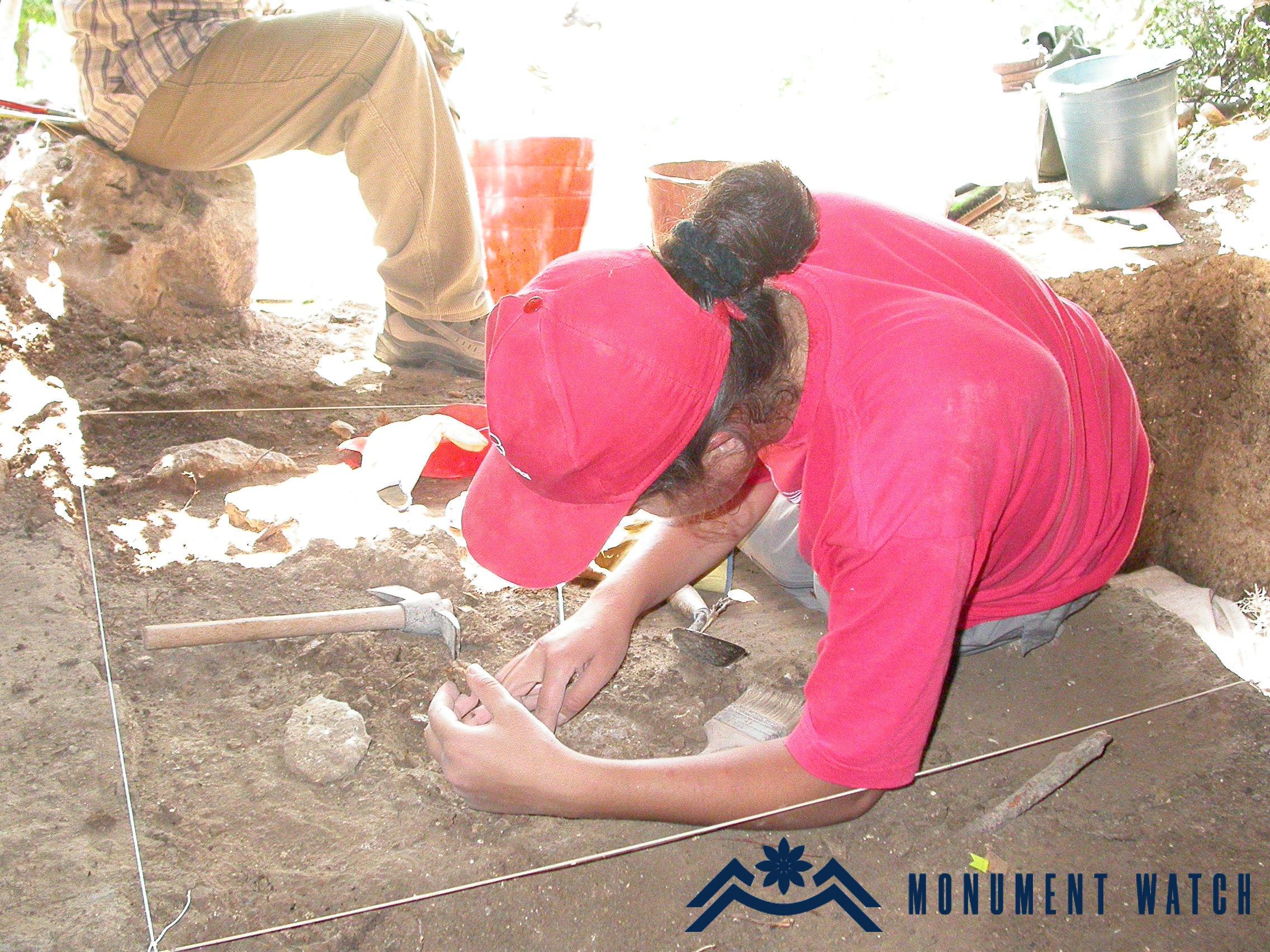
Fig. 2 The excavation process at the second stage of archaeological research, published by Fernandez-Jalvo King, Yepiskoposyan, Andrews, 2016.
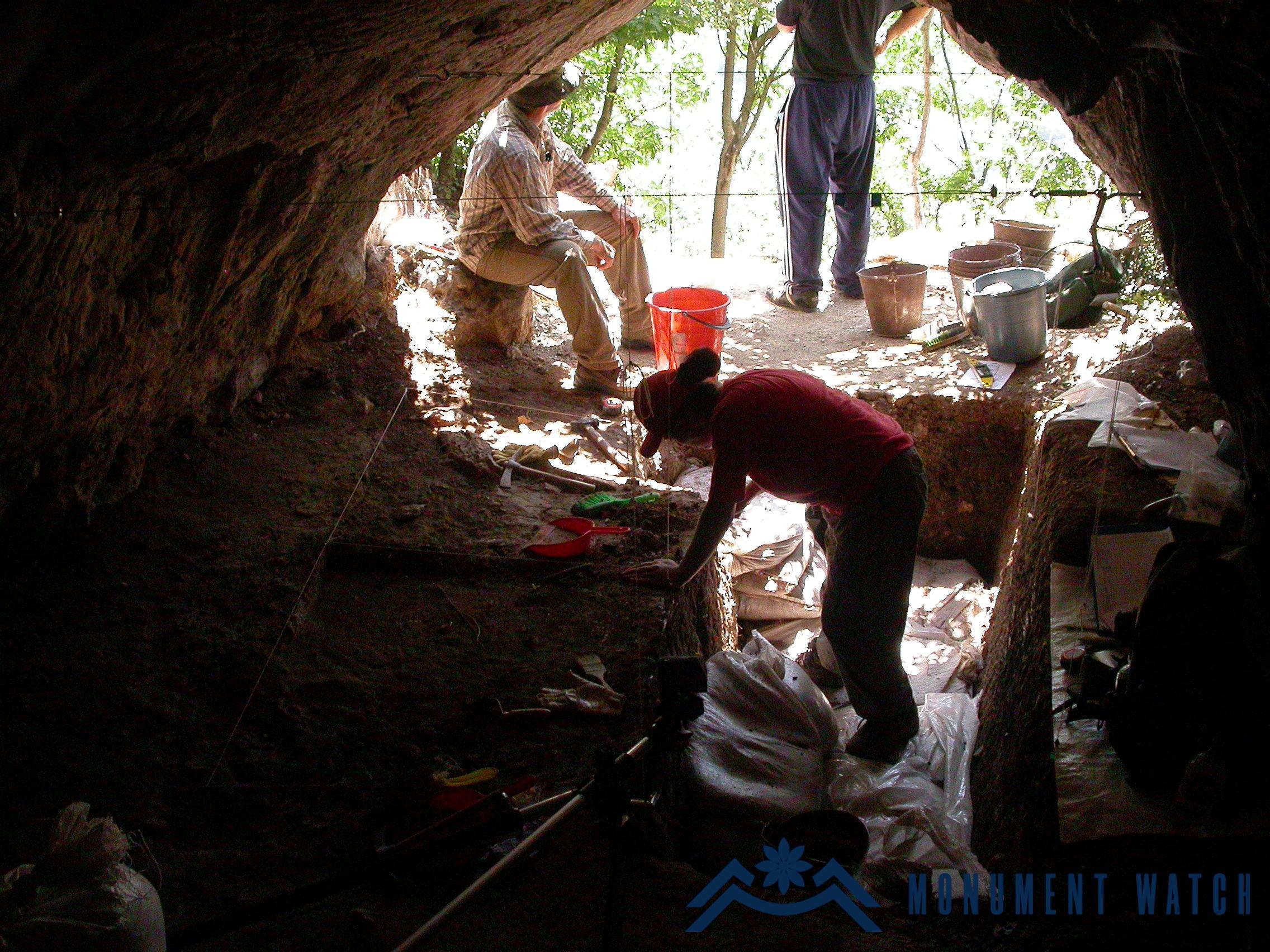
Fig. 4 The excavation process at the second stage of archaeological research, published by Fernandez-Jalvo King, Yepiskoposyan, Andrews, 2016.

Fig. 3 The excavation process at the second stage of archaeological research, published by Fernandez-Jalvo King, Yepiskoposyan, Andrews, 2016.
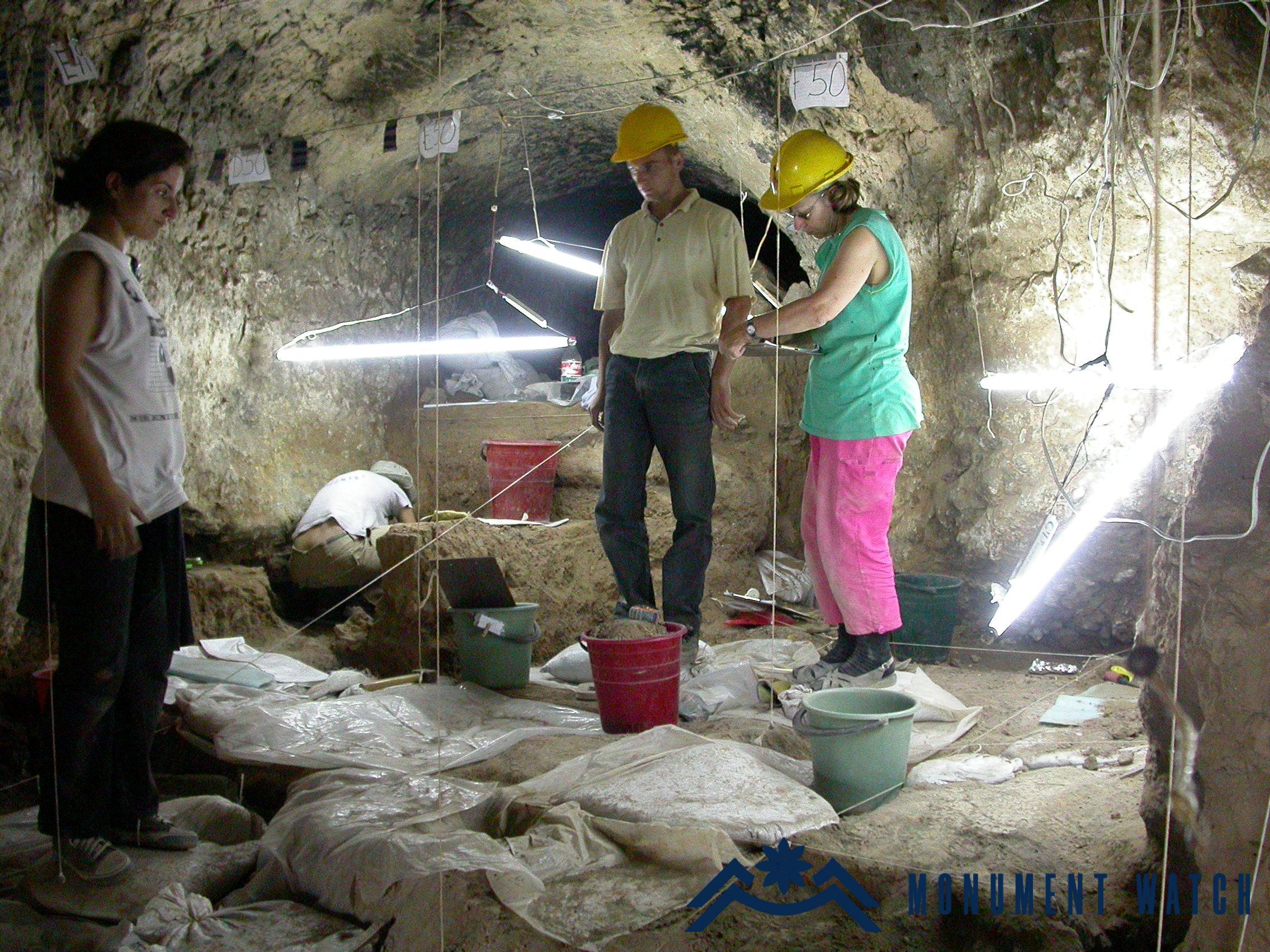
Fig. 5 The excavation process at the second stage of archaeological research, published by Fernandez-Jalvo King, Yepiskoposyan, Andrews, 2016.
The condition before the war
In recent years, no other excavations have been carried out in the area of the monument. It was included in the Azokh Cave State Reserve, the entrances were fenced, the entrance was restricted and was controlled by the state. It was planned to establish a museum in the territory of the village, where the artefacts unearthed from the excavations were to be exhibited.
The condition during the war
Combining the existing information and available video materials, we can assume that the monument was not damaged during the war.
The condition after the war and currently
Days after the war, information appeared on the Internet that about 20 boxes had been transported to Baku from the Azokh archaeological campus of the village. In those boxes were the findings, based on which it was planned to open a museum in the territory of the community.
After the war, videos were spread on the Internet of Azerbaijani soldiers entering the cave without hindrance, which harmed the unique species of bats living there.
The most vivid example of vandalism against the monument was recorded during and after the visit of Azerbaijani President Ilham Aliyev. Aliyev mentioned in his speech that Azokh is their historical homeland, where the excavations would continue. The same words were repeated by some Azerbaijani journalists and specialists.
The monument is now in serious danger.
Bibliography
- Barkhutaryants 1895 – Makar Barkhutaryants, Artsakh, Baku.
- Mkrtchyan 1985 – Mkrtchyan Sh., Historical and architectural monuments of Nagorno Karabakh, Yerevan, Armenia.
- King, Caceres Cuello de Oro, Murray, Andrews, Hickson Andrews, Dominguez Alonso, Asryan, Sanz Martin, Moloney, Yepiskoposyan 2015 – King T., Caceres Cuelo de Oro I., Murray J., Andrews P., Hixon Andrews S., Dominguez Alonso P., Asryan L., Sanz Martin T., Moloney N., Yepiskoposyan L., The main results of the 2011-2012 Azokh Cave research, 2011-2012 Archaeological Studies in Artsakh, Dizak Plus, Stepanakert, pp. 3-19.
- Fernandez-Jalvo King, Yepiskoposyan, Andrews, 2016 – Fernandez-Jalvo Y., King T., Yepiskoposyan L., Andrews P., Azokh Cave and the Transcaucasian corridor, 2016, Springer, p. 1-27.
- Mustafayev A., Jawbones and dragon legends, Azerbaijan’s prehistoric Azikh Cave. Azerbaijan International, 4, 24–32.
- Гусейнов 1971 – Гусейнов М., Азыхская пещера — многослойный памятник ашельского периода в СССР, Археологические орктытия, с. 477.
Ազոխ
Արցախ